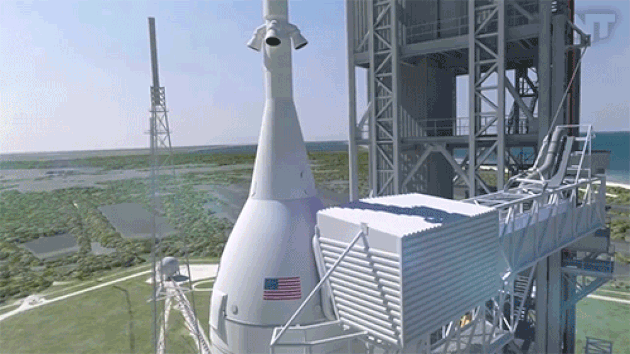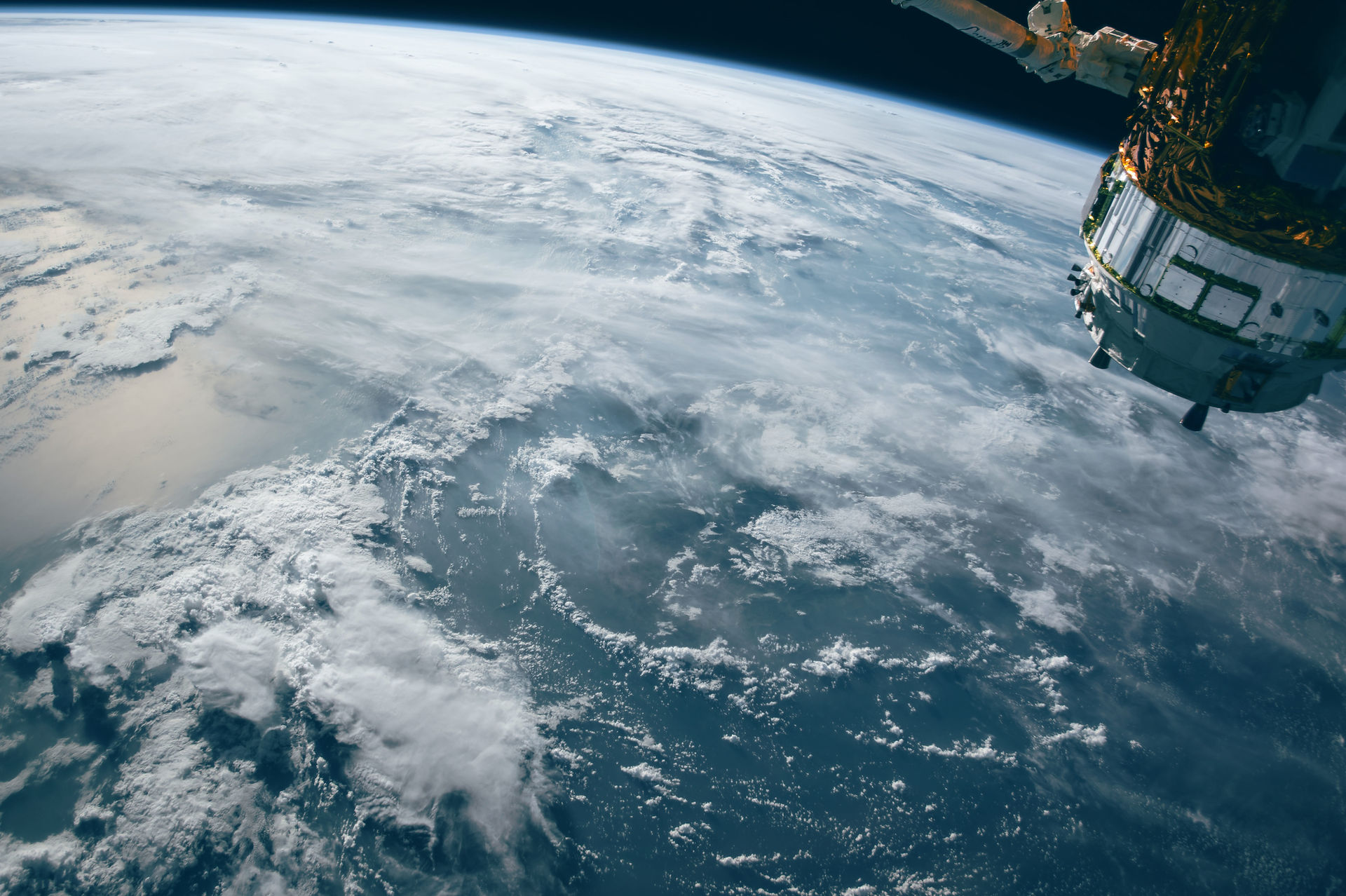




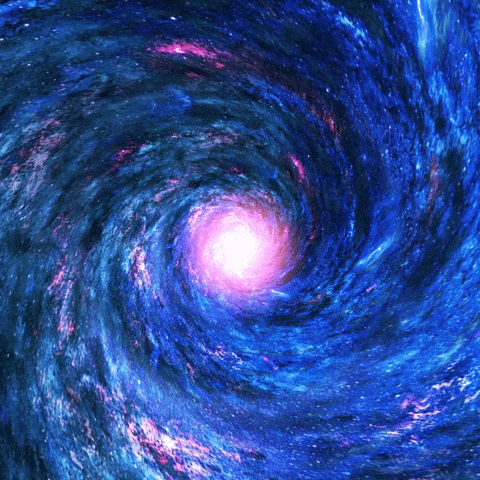
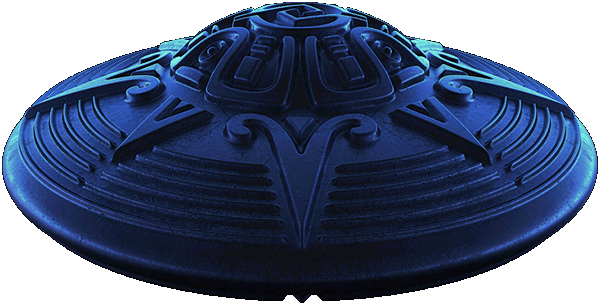


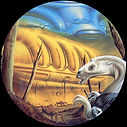

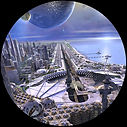

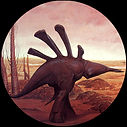

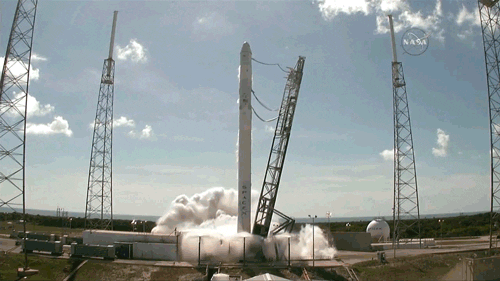



About NASA
NASA explores the unknown in air and space, innovates for the benefit of humanity, and inspires the world through discovery.
NASA Today
NASA explores the unknown in air and space, innovates for the benefit of humanity, and inspires the world through discovery. For more than 65 years, NASA has made the seemingly impossible, possible. At its 20 centers and facilities across the country and with U.S. commercial companies and international partners, NASA leads studying Earth science, including climate, our Sun, solar system, and the larger universe. We conduct cutting-edge research to advance technology and aeronautics. We operate the world’s leading space laboratory, the International Space Station, and will establish a sustainable and strong exploration presence on the Moon this decade through the Artemis campaign.
Centers and Facilities
The National Aeronautics and Space Administration is America’s civil space program and the global leader in space exploration. Located across the U.S., the agency has a diverse workforce of just under 18,000 civil servants, and works with many more U.S. contractors, academia, and international and commercial partners to explore, discover, and expand knowledge for the benefit of humanity.
Kennedy Space Center
Kennedy Space Center, one of 10 NASA field centers, is a premier multi-user spaceport with about 100 private-sector partners and nearly 250 partnership agreements. The presence of commercial companies at NASA’s Kennedy Space Center is larger than ever before, enabling us to embark on a new era of space exploration. Although Kennedy is the agency’s main launch site, the center also is home to facilities that research and develop innovative solutions that government and commercial space ventures need for working and living on the surfaces of the Moon and other bodies in our solar system.
National Aeronautics and Space Administration
NASAInfo
Premier Multi-user Spaceport
For more than 50 years, NASA has
reached new heights and revealed
the unknown to benefit all of humanity.
Spaceflight in the 21st century will
see the space around Earth open for
research and commercial enterprise
like never before.
NASA has sent robotic envoys
throughout the solar system on
continuing missions of discovery.
Astronauts aboard the International
Space Station are conducting
research not possible on Earth,
helping advance the human journey
to Mars. NASA’s Kennedy Space
Center in Florida helps make all of this
possible as a multi-user spaceport,
enabling research, processing and
launch site operations for government
and commercial customers.
Much of the science and supplies
destined for the space station
comes through Kennedy as part
of NASA’s Commercial Resupply
Services Program. Across the center,
preparations are underway to send
astronauts farther than ever before,
aboard the Orion spacecraft, launched
by the Space Launch System rocket.
The first flight test of an Orion
spacecraft was launched Dec. 5,
2014. Lifting off atop a United Launch
Alliance Delta IV Heavy rocket, Orion
soared 3,604 miles above Earth. As
such, it became the first human-rated
vehicle to leave low-Earth orbit in 42
years.
The flawless flight test was a
first step in the agency’s plans to
send humans on the Journey to
Mars. It also demonstrated that
through Kennedy’s leadership, the
center’s workforce accomplished the
considerable task of reinventing their
approach to operating the world’s
leading spaceport.
For more than 30 years, Kennedy
was a hub of activity supporting
processing, launch and landings
during America’s Space Shuttle
Program. Thousands of skilled
engineers and technicians supported
missions that made possible
unprecedented achievements in the
utilization of space. Shuttle crews
deployed and serviced the Hubble
Space Telescope, and built the
International Space Station involving
the world’s best innovators.
Following the conclusion of shuttle
flights and reductions in the size
of the workforce, a new approach
was required. Additionally, President
Barack Obama challenged NASA and
the nation to develop a new spacecraft,
designed for long journeys to allow the
nation to send humans to an asteroid
and, ultimately, a landing on Mars.
Kennedy Director Bob Cabana
points out that the Florida spaceport
now is well on its way to meeting the
president’s challenge.

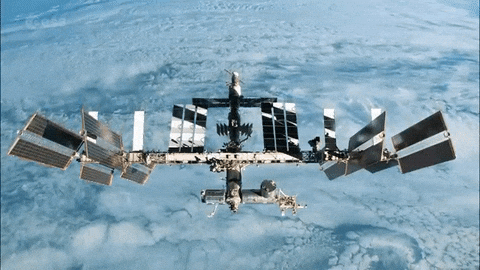








NASA Voyager’s Interstellar Future
NASA's Voyager mission launched in the 1970s. Today, it's making history as it conducts new science. But how are two spacecraft from the '70s not just surviving, but thriving farther out in space than any other spacecraft has been before?
NASA's Voyager mission launched in the 1970s. Today, it's making history as it conducts new science. But how are two spacecraft from the '70s not just surviving, but thriving farther out in space than any other spacecraft has been before?
A Little Mission Background
Voyager is a NASA mission made up of two different spacecraft, Voyager 1 and 2, which launched to space on Sept. 5, 1977, and Aug. 20, 1977, respectively. In the decades following launch, the pair took a grand tour of our solar system, studying Jupiter, Saturn, Uranus, and Neptune — one of NASA’s earliest efforts to explore the secrets of the universe. These twin probes later became the first spacecraft to operate in interstellar space — space outside the heliosphere, the bubble of solar wind and magnetic fields emanating from the Sun. Voyager 1 was the first to enter interstellar space in 2012, followed by Voyager 2 in 2018.
Today, Voyager continues not just because it can, but because it still has work to do studying interstellar space, the heliosphere, and how the two interact. "We wouldn't be doing Voyager if it wasn't taking science data," said Suzanne Dodd, the mission's current project manager and the director for the Interplanetary Network at NASA’s Jet Propulsion Laboratory.
But across billions of miles and decades of groundbreaking scientific exploration, this trailblazing interstellar journey has not been without its trials. So, what's the Voyager secret to success?
In short: preparation and creativity.
As NASA's two Voyager spacecraft travel out into deep space, they carry a small American flag and a Golden Record packed with pictures and sounds -- mementos of our home planet. This picture shows John Casani, Voyager project manager in 1977, holding a small Dacron flag that was folded and sewed into the thermal blankets of the Voyager spacecraft before they launched 36 years ago. Below him lie the Golden Record (left) and its cover (right). In the background stands Voyager 2 before it headed to the launch pad. The picture was taken at Cape Canaveral, Fla., on Aug. 4, 1977.
NASA/JPL-Caltech
We Designed Them Not to Fail
According to John Casani, Voyager project manager from 1975 to launch in 1977, "we didn't design them to last 30 years or 40 years, we designed them not to fail.”
One key driver of the mission's longevity is redundancy. Voyager's components weren't just engineered with care, they were also made in duplicate.
According to Dodd, Voyager "was designed with nearly everything redundant. Having two spacecraft — right there is a redundancy."
"We didn't design them to last 30 years or 40 years, we designed them not to fail.”
A Cutting-Edge Power Source
The twin Voyager spacecraft can also credit their longevity to their long-lasting power source.
Each spacecraft is equipped with three radioisotope thermoelectric generators. These nuclear "batteries" were developed originally by the U.S. Department of Energy as part of the Atoms for Peace program enacted by President Eisenhower in 1955. Compared to other power options at the time — like solar power, which did not have the reach to work beyond Mars — these generators have allowed Voyager to go much farther into space.
Each of NASA's Voyager probes are equipped with three radioisotope thermoelectric generators (RTGs), including the one shown here at NASA's Kennedy Space Center in Florida. The RTGs provide power for the spacecraft by converting the heat generated by the decay of plutonium-238 into electricity. Launched in 1977, the Voyager mission is managed for NASA by the agency's Jet Propulsion Laboratory, a division of Caltech in Pasadena, California.
NASA/JPL-Caltech
Voyager's generators continue to take the mission farther than any before, but they also continue to generate less power each year, with instruments needing to be shut off over time to conserve power.
Creative Solutions
As a mission that has operated at the farthest edges of the heliosphere and beyond, Voyager has endured its fair share of challenges. With the spacecraft now in interstellar space running on software and hardware from the 1970s, Voyager's problems require creative solutions.
Retired mission personnel who worked on Voyager in its earliest days have even come back out of retirement to collaborate with new mission personnel to not just fix big problems but to pass on important mission know-how to the next generation of scientists and engineers.
"From where I sit as a project manager, it's really very exciting to see young engineers be excited to work on Voyager. To take on the challenges of an old mission and to work side by side with some of the masters, the people that built the spacecraft," Dodd said. "They want to learn from each other."
After receiving data about the health and status of Voyager 1 for the first time in five months, members of the Voyager flight team celebrate in a conference room at NASA’s Jet Propulsion Laboratory on April 20. Credit: NASA/JPL-Caltech
NASA/JPL-Caltech
Within just the last couple of years, Voyager has tested the mission team's creativity with a number of complex issues. Most recently, a fuel tube inside of Voyager 1’s thrusters, which control the spacecraft's orientation and direction, became clogged. The thrusters allow the spacecraft to point their antennae and are critical to maintaining communications with Earth. Through careful coordination, the mission team was able to remotely switch the spacecraft to a different set of thrusters.
These kinds of repairs are extra challenging as a radio signal takes about 22 ½ hours to reach Voyager 1 from Earth and another 22 ½ hours to return. Signals to and from Voyager 2 take about 19 hours each way.
Voyager’s Interstellar Future
This brief peek behind the curtain highlights some of Voyager’s history and its secrets to success.
The Voyager probes may continue to operate into the late 2020s. As time goes on, continued operations will become more challenging as the mission’s power diminishes by 4 watts every year, and the two spacecraft will cool down as this power decreases. Additionally, unexpected anomalies could impact the mission’s functionality and longevity as they grow older.
As the mission presses on, the Voyager team grows this legacy of creative problem solving and collaboration while these twin interstellar travelers continue to expand our understanding of the vast and mysterious cosmos we inhabit.
What is Voyager 1?
Voyager 1 has been exploring our solar system since 1977. The probe is now in interstellar space, the region outside the heliopause, or the bubble of energetic particles and magnetic fields from the Sun. Voyager 1 was launched after Voyager 2, but because of a faster route it exited the asteroid belt earlier than its twin, and it overtook Voyager 2 on Dec. 15, 1977.
-
Voyager 1 discovered a thin ring around Jupiter and two new Jovian moons: Thebe and Metis.
-
At Saturn, Voyager 1 found five new moons and a new ring called the G-ring.
-
Voyager 1 was the first spacecraft to cross the heliosphere, the boundary where the influences from outside our solar system are stronger than those from our Sun.
-
Voyager 1 is the first human-made object to venture into interstellar space.
Unable to render the provided source
In Depth: Voyager 1
Nation
United States of America (USA)
Objective(s)
Jupiter Flyby, Saturn Flyby
Spacecraft
Voyager 1
Spacecraft Mass
1,592 pounds (721.9 kilograms)
Spacecraft Power
3 Multi-Hundred Watt Radioisotope Thermoelectric Generators (MHW-RTGs) stacked in a series on a boom, producing about 158 We each, at launch.
Mission Design and Management
NASA / JPL
Launch Vehicle
Titan IIIE-Centaur (TC-6 / Titan no. 23E-6 / Centaur D-1T)
Launch Date and Time
Sept. 5, 1977 / 12:56:01 UT
Key Dates
March 5, 1979: Jupiter flyby
Nov. 12, 1980: Saturn flyby
Feb.17, 1998: Became the most distant human-made object after overtaking NASA's Pioneer 10
Jan. 1, 1990: Voyager Interstellar Mission (VIM) officially began
Aug. 16, 2006: 100 astronomical units reached
August 2012: Voyager 1 enters interstellar space
Launch Site
Cape Canaveral, Florida / Launch Complex 41
Scientific Instruments
1. Imaging Science System (ISS)
2. Ultraviolet Spectrometer (UVS)
3. Infrared Interferometer Spectrometer (IRIS)
4. Planetary Radio Astronomy Experiment (PRA)
5. Photopolarimeter (PPS)
6. Triaxial Fluxgate Magnetometer (MAG)
7. Plasma Spectrometer (PLS)
8. Low-Energy Charged Particles Experiment (LECP)
9. Plasma Waves Experiment (PWS)
10. Cosmic Ray Telescope (CRS)
11. Radio Science System (RSS)
In Depth
Voyager 1 launched after Voyager 2, but because of a faster route it exited the solar system earlier than its twin. Voyager 1 overtook Voyager 2 on Dec. 15, 1977.
Voyager 1 began studying Jupiter in April 1978 at a range of 165 million miles (265 million km). Images showed Jupiter’s atmosphere to be more turbulent than during the Pioneer 10 and 11 flybys. Voyager 1 took a picture every 96 seconds to create a timelapse movie of the approach.
This is the original Voyager "Blue Movie," named for blue filter used to create the images. It shows the approach of Voyager 1 during a period of over 60 Jupiter days.
Credit: NASA/JPL
In early 1979, Voyager 1 discovered a faint ring system around Jupiter. The spacecraft’s closest encounter with Jupiter was at 12:05 UT on March 5, 1979 at a range of 174,000 miles (280,000 km), It went on to encounter several of Jupiter’s moons, including Amalthea, Io, Europa, Ganymede, and Callisto. Spectacular close-up photos of the moons opened up completely new worlds for planetary scientists. The spacecraft discovered two new moons, Thebe and Metis.
Its flyby of the Saturn system in November 1979 was as spectacular as the Jupiter encounter. Voyager 1 found five new moons, a new ring, and complicated ring structures, including “shepherd moons” that keep some rings well-defined. The spacecraft photographed Saturn’s moons Titan, Mimas, Enceladus, Tethys, Dione, and Rhea. All the moons appeared to be composed largely of water ice.
Images of Titan showed a thick atmosphere that completely hid the surface. The spacecraft found that the Titan’s atmosphere was composed of 90% nitrogen. Nitrogen, methane, and more complex hydrocarbons indicated prebiotic chemical reactions might be possible on Titan.
Voyager 1’s closest approach to Saturn was at 23:46 UT on Nov. 12, 1980 at a range of about 78,000 miles (126,000 km).
After Saturn, Voyager 1 headed north out of the ecliptic plane at a speed of about 3.5 AU per year. Because of the specific requirements for the Titan flyby, the spacecraft was not directed to Uranus and Neptune.
Voyager 1’s final 64 images were a mosaic taken at a distance of 40 Astronomical Units (AU) from the Sun. This solar system family portrait included six planets (Mercury and Mars were not visible). The image of Earth inspired the “Pale Blue Dot” made famous by Voyager science team member Carl Sagan (1934-1996). These were the last of a total of 67,000 images taken by the two Voyagers.
The Voyager Interstellar Mission (VIM) began on Jan, 1, 1990. The goal was to extend exploration to the outer limits of the Sun’s sphere of influence and beyond.
-
On Feb. 17, 1998, Voyager 1 became the most distant human-made object in existence when — at a distance of 69.4 AU from the Sun — it “overtook” Pioneer 10.
-
On Dec. 16, 2004, Voyager 1 reached the termination shock and entered the heliosheath.
-
On Aug. 25, 2012, the spacecraft became the first to exit the heliosphere and begin measuring the interstellar environment.
Voyager 1 continues to communicate with NASA’s Deep Space Network and send data back from four still-functioning instruments — the cosmic ray telescope, the low-energy charged particles experiment, the magnetometer, and the plasma waves experiment.
Engineers secure the cover over the Voyager 1 Golden Record in this archival image from 1977. https://photojournal.jpl.nasa.gov/catalog/PIA21740
NASA/JPL-Caltech
Each of the Voyagers contain a message to potential extraterrestrials in the form of a 30-centimeter diameter gold-plated copper disc. Like the plaques on Pioneers 10 and 11, the Voyager Golden Record has inscribed symbols that show the location of Earth relative to several pulsars. The record includes instructions to play it similar to a vinyl record player.
Audio on the disc includes greetings in 55 languages, 35 sounds from life on Earth (such as whale songs, laughter, etc.), 90 minutes of music including everything from Mozart and Bach to Chuck Berry and Blind Willie Johnson. It also includes 115 images of life on Earth and recorded greetings from then U.S. President Jimmy Carter and then-UN Secretary-General Kurt Waldheim.
As of Aug. 21, 2024, Voyager 1 was 164.7 AU from Earth — the farthest object created by humans — moving at a velocity of 38,026.79 mph (17.0 km/second) relative to the Sun.
Adapted from Asif A. Saddiqi’s “Beyond Earth: A Chronicle of Deep Space Exploration,” NASA History Office, 2018.


Voyager 2
What is Voyager 2?
NASA's Voyager 2 is the second spacecraft to enter interstellar space. On Dec. 10, 2018, the spacecraft joined its twin – Voyager 1 – as the only human-made objects to enter the space between the stars.
-
Voyager 2 is the only spacecraft to study all four of the solar system's giant planets at close range.
-
Voyager 2 discovered a 14th moon at Jupiter.
-
Voyager 2 was the first human-made object to fly past Uranus.
-
At Uranus, Voyager 2 discovered 10 new moons and two new rings.
-
Voyager 2 was the first human-made object to fly by Neptune.
-
At Neptune, Voyager 2 discovered five moons, four rings, and a "Great Dark Spot."
Unable to render the provided source
This 3D visualization is updated with real spacecraft data every five minutes.
NASA
In Depth: Voyager 2
Nation
United States of America (USA)
Objective(s)
Jupiter Flyby, Saturn Flyby, Uranus Flyby, Neptune Flyby
Spacecraft
Voyager 2
Spacecraft Mass
1,592 pounds (721.9 kilograms)
Mission Design and Management
NASA / JPL
Launch Vehicle
Titan IIIE-Centaur (TC-7 / Titan no. 23E-7 / Centaur D-1T)
Launch Date and Time
Aug. 20, 1977 / 14:29:44 UT
Key Dates
July 9, 1979: Jupiter Flyby
Aug 25, 1981: Saturn Flyby
Jan 24, 1986: Uranus Flyby
Aug 25, 1989: Neptune Flyby
Aug 30, 2007: Crossed Termination Shock
Nov 25, 2018: Entered Interstellar Space
Launch Site
Cape Canaveral, Fla. / Launch Complex 41
Scientific Instruments
1. Imaging Science System (ISS)
2. Ultraviolet Spectrometer (UVS)
3. Infrared Interferometer Spectrometer (IRIS)
4. Planetary Radio Astronomy Experiment (PRA)
5. Photopolarimeter (PPS)
6. Triaxial Fluxgate Magnetometer (MAG)
7. Plasma Spectrometer (PLS)
8. Low-Energy Charged Particles Experiment (LECP)
9. Plasma Waves Experiment (PWS)
10. Cosmic Ray Telescope (CRS)
11. Radio Science System (RSS)
Results
The two-spacecraft Voyager missions were designed to replace original plans for a “Grand Tour” of the planets that would have used four highly complex spacecraft to explore the five outer planets during the late 1970s.
NASA canceled the plan in January 1972 largely due to anticipated costs (projected at $1 billion) and instead proposed to launch only two spacecraft in 1977 to Jupiter and Saturn. The two spacecraft were designed to explore the two gas giants in more detail than the two Pioneers (Pioneers 10 and 11) that preceded them.
In 1974, mission planners proposed a mission in which, if the first Voyager was successful, the second one could be redirected to Uranus and then Neptune using gravity assist maneuvers.
Each of the two spacecraft was equipped with a slow-scan color TV camera to take images of the planets and their moons and each also carried an extensive suite of instruments to record magnetic, atmospheric, lunar, and other data about the planetary systems.
The design of the two spacecraft was based on the older Mariners, and they were known as Mariner 11 and Mariner 12 until March 7, 1977, when NASA Administrator James C. Fletcher (1919-1991) announced that they would be renamed Voyager.
Power was provided by three plutonium oxide radioisotope thermoelectric generators (RTGs) mounted at the end of a boom.
Voyager 2 at Jupiter
This color composite from Voyager 2 shows the Great Red Spot, Jupiter's iconic, long-lived storm, during the late Jovian afternoon. North of the Red Spot lies a curious darker section of the South Equatorial Belt (SEB), the belt in which the Red Spot is located. A bright eruption of material passing from the SEB northward into the diffuse equatorial clouds has been observed on all occasions when this feature passes north of the Red Spot. The remnants of one such eruption are apparent in this photograph. To the lower left of the Red Spot lies one of the three long-lived White Ovals. This photograph was taken on June 29, 1979, when Voyager 2 was nearly 6 million miles (9 million kilometers) from Jupiter. The smallest features visible are more than 106 miles (170 kilometers) across.
NASA/JPL
Voyager 2 began transmitting images of Jupiter April 24, 1979, for time-lapse movies of atmospheric circulation. Unlike Voyager 1, Voyager 2 made close passes to the Jovian moons on its way into the system, with scientists especially interested in more information from Europa and Io (which necessitated a 10 hour-long “volcano watch”).
During its encounter, it relayed back spectacular photos of the entire Jovian system, including its moons Callisto, Ganymede, Europa (at a range of about 127,830 miles or 205,720 kilometers, much closer than Voyager 1), Io, and Amalthea, all of which had already been surveyed by Voyager 1.
Voyager 2’s closest encounter to Jupiter was at 22:29 UT July 9, 1979, at a range of about 400,785 miles (645,000 kilometers). It transmitted new data on the planet’s clouds, its newly discovered four moons, and ring system, as well as 17,000 new pictures.
When the earlier Pioneers flew by Jupiter, they detected few atmospheric changes from one encounter to the second, but Voyager 2 detected many significant changes, including a drift in the Great Red Spot as well as changes in its shape and color.
With the combined cameras of the two Voyagers, at least 80% of the surfaces of Ganymede and Callisto were mapped out to a resolution of about 3 miles (5 kilometers).
Voyager 2 at Saturn
Saturn storms observed by Voyager 2 on Aug. 5, 2004. Voyager 1 and 2 observed radio signals from lightning which were interpreted as being from a persistent, low-latitude storm system that was extended in longitude, perhaps similar to the region highlighted on this Voyager 2 image acquired on Aug. 4, 1981, from a distance of 21 million kilometers (13 million miles).
NASA/JPL-Caltech
Following a course correction two hours after its closest approach to Jupiter, Voyager 2 sped to Saturn – its trajectory determined to a large degree by a decision made in January 1981, to try to send the spacecraft to Uranus and Neptune later in the decade.
Its encounter with the sixth planet began Aug. 22, 1981, two years after leaving the Jovian system, with imaging of the moon Iapetus. Once again, Voyager 2 repeated the photographic mission of its predecessor, although it actually flew about 14,290 miles (23,000 kilometers) closer to Saturn. The closest encounter to Saturn was at 01:21 UT Aug. 26, 1981, at a range of about 63,000 miles (101,000 kilometers).
The spacecraft provided more detailed images of the ring “spokes” and kinks, and also the F-ring and its shepherding moons, all found by Voyager 1. Voyager 2’s data suggested that Saturn’s A-ring was perhaps only about 980 feet (300 meters) thick.
As it flew behind and up past Saturn, the probe passed through the plane of Saturn’s rings at a speed of 8 miles per second (13 kilometers per second). For several minutes during this phase, the spacecraft was hit by thousands of micron-sized dust grains that created “puff” plasma as they were vaporized. Because the vehicle’s attitude was repeatedly shifted by the particles, attitude control jets automatically fired many times to stabilize the vehicle.
During the encounter, Voyager 2 also photographed the Saturn moons Hyperion (the “hamburger moon”), Enceladus, Tethys, and Phoebe, as well as the more recently discovered Helene, Telesto and Calypso.
Voyager 2 at Uranus
The complex terrain of Ariel is viewed in this image, the best Voyager 2 color picture of the Uranian moon.
NASA/JPL-Caltech
Although Voyager 2 had fulfilled its primary mission goals with the two planetary encounters, mission planners directed the veteran spacecraft to Uranus—a journey that would take about 4.5 years.
In fact, its encounter with Jupiter was optimized in part to ensure that future planetary flybys would be possible.
The Uranus encounter’s geometry was also defined by the possibility of a future encounter with Neptune: Voyager 2 had only 5.5 hours of close study during its flyby.
The first human-made object to fly past Uranus, Voyager 2's long-range observations of the planet began Nov. 4, 1985, when signals took approximately 2.5 hours to reach Earth. Light conditions were 400 times less than terrestrial conditions. Closest approach to Uranus took place at 17:59 UT Jan. 24, 1986, at a range of about 50,640 miles (81,500 kilometers).
During its flyby, Voyager 2 discovered 10 new moons (given such names as Puck, Portia, Juliet, Cressida, Rosalind, Belinda, Desdemona, Cordelia, Ophelia, and Bianca – obvious allusions to Shakespeare, continuing a naming tradition begun in 1787), two new rings in addition to the “older” nine rings, and a magnetic field tilted at 55 degrees off-axis and off-center.
The spacecraft found wind speeds in Uranus’ atmosphere as high as 450 miles per hour (724 kilometers per hour) and found evidence of a boiling ocean of water some 497 miles (800 kilometers) below the top cloud surface. Its rings were found to be extremely variable in thickness and opacity.
Voyager 2 also returned spectacular photos of Miranda, Oberon, Ariel, Umbriel, and Titania, five of Uranus’ larger moons. In flying by Miranda at a range of only 17,560 miles (28,260 kilometers), the spacecraft came closest to any object so far in its nearly decade-long travels. Images of the moon showed a strange object whose surface was a mishmash of peculiar features that seemed to have no rhyme or reason. Uranus itself appeared generally featureless.
The spectacular news of the Uranus encounter was interrupted the same week by the tragic Challenger accident that killed seven astronauts during their space shuttle launch Jan. 28, 1986.
Voyager 2 at Neptune
This picture of Neptune was produced from the last whole planet images taken through the green and orange filters on the Voyager 2 narrow angle camera.
NASA/JPL-Caltech
Following the Uranus encounter, the spacecraft performed a single midcourse correction Feb. 14, 1986 – the largest ever made by Voyager 2 – to set it on a precise course to Neptune.
Voyager 2’s encounter with Neptune capped a 4.3 billion-mile (7 billion-kilometer) journey when, on Aug. 25, 1989, at 03:56 UT, it flew about 2,980 miles (4,800 kilometers) over the cloud tops of the giant planet, the closest of its four flybys. It was the first human-made object to fly by the planet. Its 10 instruments were still in working order at the time.
During the encounter, the spacecraft discovered six new moons (Proteus, Larissa, Despina, Galatea, Thalassa, and Naiad) and four new rings.
The planet itself was found to be more active than previously believed, with 680-mile (1,100-kilometer) per hour winds. Hydrogen was found to be the most common atmospheric element, although the abundant methane gave the planet its blue appearance.
Images revealed details of the three major features in the planetary clouds – the Lesser Dark Spot, the Great Dark Spot, and Scooter.
Voyager photographed two-thirds of Neptune’s largest moon Triton, revealing the coldest known planetary body in the solar system and a nitrogen ice “volcano” on its surface. Spectacular images of its southern hemisphere showed a strange, pitted, cantaloupe-type terrain.
The flyby of Neptune concluded Voyager 2’s planetary encounters, which spanned an amazing 12 years in deep space, virtually accomplishing the originally planned “Grand Tour” of the solar system – at least in terms of targets reached, if not in science accomplished.
Voyager 2's Interstellar Mission
Once past the Neptune system, Voyager 2 followed a course below the ecliptic plane and out of the solar system. Approximately 35 million miles (56 million kilometers) past the encounter, Voyager 2’s instruments were put in low-power mode to conserve energy.
After the Neptune encounter, NASA formally renamed the entire project the Voyager Interstellar Mission (VIM).
Of the four spacecraft sent out to beyond the environs of the solar system in the 1970s, three of them – Voyagers 1 and 2 and Pioneer 11 – were all heading in the direction of the solar apex, i.e., the apparent direction of the Sun’s travel in the Milky Way galaxy, and thus would be expected to reach the heliopause earlier than Pioneer 10, which was headed in the direction of the heliospheric tail.
In November 1998, 21 years after launch, nonessential instruments were permanently turned off, leaving seven instruments still operating.
At 9.6 miles per second (15.4 kilometers per second) relative to the Sun, it will take about 19,390 years for Voyager 2 to traverse a single light year.
Asif Siddiqi
Beyond Earth: A Chronicle of Deep Space Exploration
Through the turn of the century, NASA's Jet Propulsion Laboratory (JPL) continued to receive ultraviolet and particle fields data. For example, on Jan. 12, 2001, an immense shock wave that had blasted out of the outer heliosphere on July 14, 2000, finally reached Voyager 2. During its six-month journey, the shock wave had plowed through the solar wind, sweeping up and accelerating charged particles. The spacecraft provided important information on high-energy shock-energized ions.
On Aug. 30, 2007, Voyager 2 passed the termination shock and then entered the heliosheath. By Nov. 5, 2017, the spacecraft was 116.167 AU (about 10.8 billion miles or about 17.378 billion kilometers) from Earth, moving at a velocity of 9.6 miles per second (15.4 kilometers per second) relative to the Sun, heading in the direction of the constellation Telescopium. At this velocity, it would take about 19,390 years to traverse a single light-year.
On July 8, 2019, Voyager 2 successfully fired up its trajectory correction maneuver thrusters and will be using them to control the pointing of the spacecraft for the foreseeable future. Voyager 2 last used those thrusters during its encounter with Neptune in 1989.
The spacecraft's aging attitude control thrusters have been experiencing degradation that required them to fire an increasing and untenable number of pulses to keep the spacecraft's antenna pointed at Earth. Voyager 1 had switched to its trajectory correction maneuver thrusters for the same reason in January 2018.
To ensure that both vintage robots continue to return the best scientific data possible from the frontiers of space, mission engineers are implementing a new plan to manage them. The plan involves making difficult choices, particularly about instruments and thrusters.
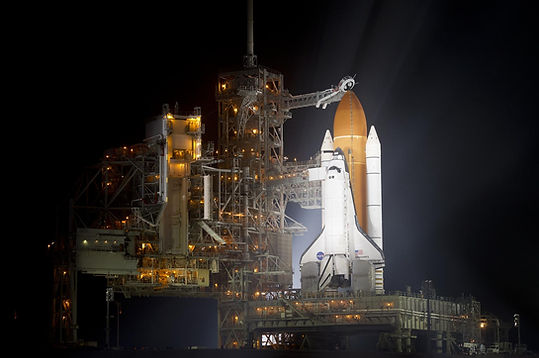





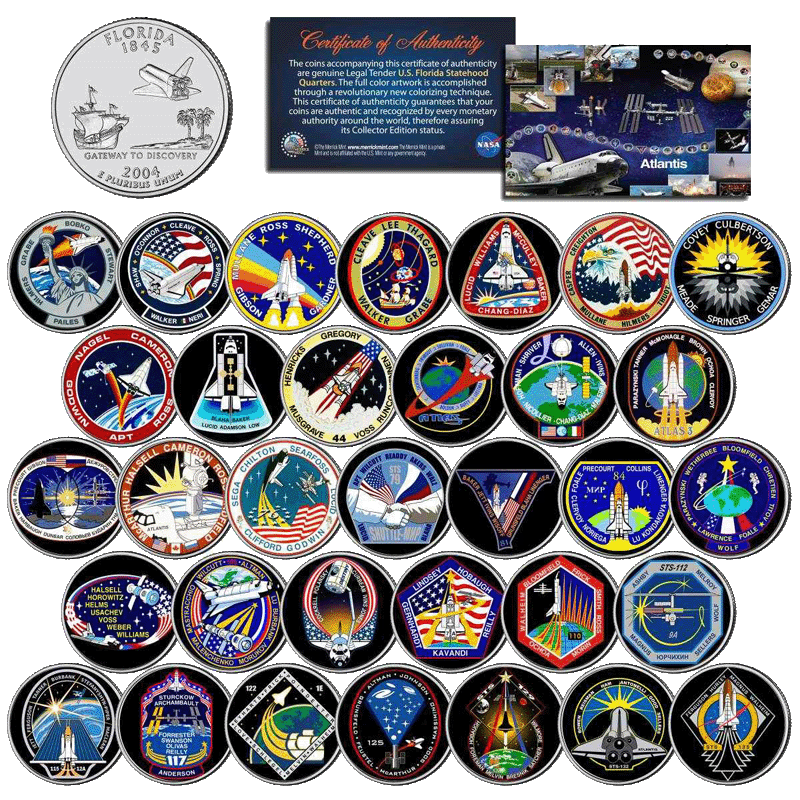

International Space Station
About the International Space Station
The station was designed between 1984 and 1993. Elements of the station were in construction throughout the US, Canada, Japan, and Europe beginning in the late 1980s.
The International Space Station Program brings together international flight crews, multiple launch vehicles, globally distributed launch and flight operations, training, engineering, and development facilities, communications networks, and the international scientific research community.
Overview
The Space Station was officially given approval by President Reagan and a budget approved by the US Congress in 1984. NASA Administrator James Beggs immediately set out to find international partners who would cooperate on the program. Canadians, Japanese and many nations of the European Space Agency began to participate in the program soon after.
The Station was designed between 1984 and 1993. Elements of the Station were in construction throughout the US, Canada, Japan, and Europe beginning in the late 1980s.
In 1993, as the Station was undergoing a redesign, the Russians were invited to participate.
Agreement was made to proceed in two phases. During the first phase, NASA Space Shuttles would carry astronauts and cosmonauts to the Russian Mir Orbital Station. The US would help to modify two Russian-built modules to house US and international experiments and to establish working processes between the participating nations. During Phase 2, led by the US and Russia, all of the participating nations would contribute elements and crewmembers to a new International Space Station (ISS).
Phase 1, called NASA-Mir, took place between 1995 and 1998. Eleven Space Shuttle launches went to Mir with the last ten docking to Mir and astronauts and cosmonauts transferring between the two vehicles. Two new Russian modules, Spektr and Priroda were launched, became part of Mir, and housed dozens of US payloads and seven US astronauts.
In Phase 2, the elements of the new ISS were launched beginning in 1998.
Five partner agencies, the Canadian Space Agency, the European Space Agency, the Japan Aerospace Exploration Agency, the National Aeronautics and Space Administration, and the State Space Corporation “Roscosmos”, operate the International Space Station, with each partner responsible for managing and controlling the hardware it provides. The station was designed from the outset to be interdependent and relies on contributions from across the partnership to function. The International Space Station (ISS) is the unique blend of unified and diversified goals among the world’s space agencies that will lead to improvements in life on Earth for all people of all nations. While the various space agency partners may emphasize different aspects of research to achieve their goals in the use of the ISS, they are unified in several important overarching goals. All of the agencies recognize the importance of leveraging the ISS as an education platform to encourage and motivate today’s youth to pursue careers in math, science, engineering, and technology (STEM): educating the children of today to be the leaders and space explorers of tomorrow. All the agencies are unified in their goals to apply knowledge gained through ISS research in human physiology, radiation, materials science, engineering, biology, fluid physics, and technology: enabling future space exploration missions.
Advancing our knowledge in the areas of human physiology, biology, and material and physical sciences and translating that knowledge to health, socioeconomic, and environmental benefits on
Earth is another common goal of the agencies: returning the knowledge gained in space research for the benefit of society.
The ISS program’s greatest accomplishment is as much a human achievement as a technological one. The global partnership of space agencies exemplifies meshing of cultural differences and political intricacies to plan, coordinate, provide, and operate the complex elements of the ISS. The program also brings together international flight crews and globally distributed launch, operations, training, engineering, communications networks, and scientific research communities.
Although the primary Mission Control centers are in the US and Russia, several ancillary control centers in Canada, Japan, and Europe also have a role in managing each nation’s elements and crew members.
The intended life span of ISS has been extended several times. Since several elements are now beyond their originally intended lifespans, analyses are conducted periodically to ensure the Station is safe for continued habitation and operation. Much of the Station is modular and so as parts and systems wear out, new parts are launched to replace or augment the original. The ISS will continue to be a working laboratory and outpost in orbit until at least 2030.
Did You Know?
Construction for the ISS began in 1998. New modules were added as recently as 2021.
How it All Began
The idea of living in space was the very first step towards a space station. The first person to write about living and traveling in space was the noted renaissance astronomer Johannes Kepler in the early 1600s. He was the first to realize that planets were worlds, that there was space between the planets and he wrote that one day people would travel through space.
In the 1860s, Edward Everett Hale wrote the “Brick Moon” which was published in the Atlantic Weekly magazine. The Brick Moon had many of the characteristics of a space station; it was a man-made structure that orbited Earth and provided housing and life support for its crew while serving as a navigation aid for people on Earth.
Others, like the Russian theoretician Konstantin Tsiolkovsky were thinking about designs for space stations that could use sunlight for power and that would serve as miniature Earths, with growth of vegetation in the interior.
The first details of the engineering, design and construction of a space station were described by Herman Noordung, in 1928. He described a “wohnrad” or “living wheel“; a wheel shaped rotating space station. He reasoned that the rotation would be required to create artificial gravity for the crewmembers. He described how it would be assembled first on the ground for testing and then its individual parts launched by rocket for reassembly in orbit.
Willy Ley wrote about life in a space station in 1952. “When man first takes up residence in space, it will be within the spinning hull of a wheel-shaped space station [revolving] around the earth much as the moon does. Life will be cramped and complicated for space dwellers; they will exist under conditions comparable to those in a modem submarine…it will be a self-contained community in which all man’s needs, from air-conditioning to artificial gravity, have been supplied.” [Willy Ley and Chesley Bonestell in The Conquest of Space, Viking Press.] Their ideas went nationwide in Collier’s Magazine and on the Walt Disney television program.
The US government began to develop space station concepts in the 1950s. One of the early concepts was the US Army Project Horizon modular orbital station which would serve to house crews and refuel spacecraft on their way to a moon base. In the early 1960s, NASA’s Manned Spacecraft Center (now Johnson Space Center in Houston) elaborated on the requirements for a station and they patented the concept. Concepts for the first US space station, which would later become known as Skylab, started about this time.
Almost simultaneously, the Soviet Union planned a super rocket launcher that would orbit a large space station. The rocket, designated the N-1, would also be pressed into service for the Soviet manned Moon landing program. But test launches beginning in 1969 proved unsuccessful and so the Soviets turned their attention to smaller stations which could be launched by their most powerful functioning rocket, the Proton.
Assembly
The ISS components were built in various countries around the world, with each piece performing once connected in space, a testament to the teamwork and cultural coordination.
Like a Lego set, each piece of the ISS was launched and assembled in space, using complex robotics systems and humans in spacesuits connecting fluid lines and electrical wires.
The ISS is the largest humanmade object ever to orbit Earth. ISS has a pressurized volume of approximately 900 m3 (31,000 ft3) and a mass over 400,000 kg (900,000 lbs). Actual numbers vary as logistics resupply vehicles come and go on a frequent and regular basis.
The ISS solar arrays cover an area of 2,247 m2 (24,187 ft2) and can generate 735,000 kW-hours of electrical power per year.
The ISS structure measures 109 m (358 ft) (across arrays) by 51 m (168 ft) (module length from the forward end of PMA2 to the aft end of the SM).
ISS orbits at an altitude of between 370–460 km (200–250 nmi). Its falls towards Earth continually due to atmospheric friction and requires periodic rocket firings to boost the orbit. The ISS orbital inclination is 51.6°, permitting ISS to fly over 90% of the inhabited Earth.
ISS carries a crew of between 3 and 13 depending on then number of people and passenger vehicles during handover periods, It continually hosts a crew of seven.
Building the ISS required 36 Space Shuttle assembly flights and 6 Russian Proton and Soyuz rocket launches. More launches are continuing as new modules are completed and ready to become part of the orbiting complex.
Logistics, resupply and crew exchange have been provided by a number of vehicles including the
Space Shuttle, Russian Progress and Soyuz, Japanese H-II Transfer Vehicle (HTV), European Automated Transfer Vehicle (ATV) and commercial Dragon, Cygnus and Starliner vehicles.
For more information about the International Space Station assembly elements visit https://www.nasa.gov/international-space-station/international-space-station-assembly-elements/.
Drawing of the International Space Station with all of the parts labeled.
NASA
Spacewalks
The complex assembly of space station would have been impossible without the skilled labors of spacewalking astronauts and cosmonauts. Spacewalks, or Extravehicular activity (EVA) were conducted in Earth orbit, on the Moon’s surface, and in deep space between the Earth and Moon in prior programs.
The cumulative experience of the EVAs conducted prior to the start of ISS assembly formed a solid basis on which to build the necessary spacewalking skills but during the ISS Program more spacewalks have been conducted than in all prior programs, combined. At one time ‘the wall of spacewalks‘ was seen as a formidable obstacle to assembling the ISS but spacewalks and assembly missions have proceeded almost with no hindrances.
In the two+ decades since station assembly began, more than 260 spacewalks for assembly, maintenance, and reconfiguration have been required. Spacewalks were essential to preparing the ISS to accommodate its first occupants.
Astronauts Jerry L. Ross and James H. Newman conducted the first ISS EVA on December 7, 1988, during the STS-88 mission, to connect electrical and data cables between the station’s first two modules, FGB Zarya and Node 1 Unity. Over the course of the first five shuttle assembly missions, 12 crew members conducted 10 spacewalks prior to the Expedition 1 crew taking up residence on the station. During STS-96, the second assembly mission in May 1999, Tamara E. “Tammy” Jernigan became the first woman to perform an EVA at ISS. Astronaut Edward T. “Ed” Lu and cosmonaut Yuri I. Malenchenko conducted the first U.S.-Russian EVA at station during the June 2000 STS-101 mission. The two connected electrical and data cables between FGB Zarya and the newly arrived Service Module Zvezda. In preparation for that spacewalk Russian engineers modified the Hydrolab facility at the Gagarin Cosmonaut Training Center to accommodate the U.S. EMU spacesuits. American engineers adapted the Neutral Buoyancy Laboratory at NASA’s Johnson Space Center to accommodate the Expedition 1 crew train using either the US EMU or Russian Orlan spacesuits.
Following the arrival of Expedition 1 crew members William M. Shepherd, Yuri P. Gidzenko and Sergei K. Krikalev aboard the space station on Nov. 2, 2000, the pace of assembly and the number of spacewalks increased significantly. Between December 2000 and April 2003, 38 astronauts and cosmonauts completed 41 EVAs, including the first staged from station itself, using an ISS airlock, rather than from the visiting Space Shuttle. On March 10, 2001, Expedition 2 astronauts James S. Voss and Susan J. Helms conducted a spacewalk during STS-102 that, at eight hours and 56 minutes, still stands as the longest EVA in history. In April 2001, Canadian Space Agency astronaut Chris A. Hadfield became the first Canadian to conduct a spacewalk at the orbiting laboratory during STS-100, the flight that brought the Canadarm2 robotics system to the space station. On June 8, Voss joined Expedition 2 cosmonaut Yuri V. Usachev for the first Russian segment EVA, an ‘internal’ spacewalk inside Zvezda’s Transfer Compartment to prepare it for the arrival of a new module.
The STS-104 mission in July 2001 brought the US-built Quest ‘Joint’ Airlock to the station, providing station a standalone EVA capability with accommodations for either the U.S. Extravehicular Mobility Unity (EMU) or Russian Orlan suits. Michael L. Gernhardt and James F. Reilly performed the first EVA from Quest on July 20. The Russian Pirs (Pier) module arrived at station on Sept. 17, 2001, providing the Russian segment with its own airlock capability. On Oct. 8, Expedition 3 cosmonauts Vladimir N. Dezhurov and Mikhail V. Tyurin staged the first EVA from Pirs.
Along with American and Russian crewmates, international partners continued to play a role in spacewalking, with Philippe Perrin becoming the first astronaut from France to perform a spacewalk at station during the STS-111 mission in June 2002.
Following the Space Shuttle Columbia accident, station spacewalks continued, but only from the Russian segment with the added complication that with the resident crew size was reduced to two, the pair of spacewalking crew members left no one inside to monitor its systems. Although this posed a slightly increased risk should something go wrong, these “two-person” spacewalks proved essential during the shuttle hiatus. Expedition 8 crew members Aleksandr Y. Kaleri and Mike Foale conducted the first of these EVAs on Feb. 26, 2004. Foale had prior experience with the Orlan suit, as he had completed an EVA during his long-duration stay aboard Mir in 1997. The crew had to cut the spacewalk short due to Kaleri’s suit overheating and water droplets forming inside his helmet. The crew later identified the problem as a kink in the water line in his liquid cooling garment. The incident provided a preview of a more serious problem, which would occur in an EMU during an EVA more than nine years later.
On the STS-114 shuttle Return to Flight mission, Soichi Noguchi became the first astronaut from the Japan Aerospace Exploration Agency (JAXA) to conduct an EVA at station on July 30, 2005. The first ESA (European Space Agency) astronaut to perform a station spacewalk was Expedition 13 crew member Thomas A. Reiter from Germany on Aug. 3, 2006.
Although all spacewalks carry a certain amount of risk, two examples illustrate how some are riskier than others. The objectives of the STS-120 mission in October 2007 included not only the delivery of the Harmony module to station, but also the relocation of the P6 truss segment from its location atop the Z1 truss, where it had been since December 2000, to the outboard port-side truss. During the overall reconfiguration of the station’s power systems earlier in 2007, the P6’s solar arrays were rolled up. After the crew members relocated P6 to the outboard truss, they began to unfurl the two arrays. The first array opened without incident, but with the second array nearly unfurled, the astronauts noticed a tear in a small portion of the panel and immediately halted the deployment to prevent further damage. Working with the crew aboard, mission managers devised a plan to have one of the astronauts essentially suture the tear in the panel. Appropriately enough, one of the two STS-120 spacewalkers, Scott E. Parazynski, was also a physician, and he put his suturing skills to good use. Attached to a portable foot restraint, Parazynski was hoisted atop not only the station’s robotic arm, but also the shuttle’s boom normally used to inspect the shuttle orbiter’s tiles — the impromptu arrangement providing just enough reach for Parazynski to successfully repair the torn array using improvised “cufflinks.” After he secured five cufflinks to the damaged panel, crew members inside the station fully extended the array as Parazynski monitored the event.
For more information about spacewalks visit https://www.nasa.gov/international-space-station/space-station-spacewalks/.
STS-100 EVA view, astronaut Parazynski, Scott E. totes a direct current switching unit while anchored on the end of Canadarm2.
NASA
Did You Know?
Assembly of the International Space Station would not have been possible without the skilled work of dozens of astronauts and cosmonauts performing intricate tasks in bulky spacesuits in the harsh environment of space.
Did You Know?
There are 3 Nodes that join the modules of the ISS. They are: named Tranquility, Harmony, and Unity,
International Cooperation
The International Space Station (ISS) Program’s greatest accomplishment is as much a human achievement as it is a technological one—how best to plan, coordinate, and monitor the varied activities of the Program’s many organizations.
An international partnership of space agencies provides and operates the elements of the ISS. The principals are the space agencies of the United States, Russia, Europe, Japan, and Canada. The ISS has been the most politically complex space exploration program ever undertaken.
For more information about international cooperation visit https://www.nasa.gov/international-space-station/space-station-international-cooperation/.
The familiar u0022bootu0022 shape of the country of Italy stands out in this nighttime image with sparkling city lights reaching from Sicily off the u0022toeu0022 of the boot, to the approaches to the Alps on the north end of the country.
NASA
Research and Science
The International Space Station is an unprecedented achievement in global human endeavors to build and utilize a research platform in space. Since 2000, the station evolved from an outpost into a highly capable microgravity laboratory.
In its third decade of continuous human presence, the International Space Station has a far-reaching impact as a microgravity lab hosting technology, demonstrations, and scientific investigations from a range of fields. Results are compounding and new benefits are emerging.
For more information about the research conducted on the International Space Station visit https://www.nasa.gov/international-space-station/space-station-research-and-technology/.
Astronaut Kayla Barron checks out plants growing inside the Veggie facility.
NASA
Expeditions
The International Space Station has been continuously inhabited for over 20 years beginning with Expedition 1 when it docked on November 2, 2000, when it was just three modules. The orbiting laboratory has expanded to the size of a football field hosting over 260 individuals from 21 countries comprising over 60 Expeditions. The orbital outpost will continue to provide advanced research benefitting humans on and off the Earth through 2030.
For more information about expeditions to the International Space Station visit https://www.nasa.gov/international-space-station/expedition-missions-content-list/.
The Axiom Mission-2 and Expedition 69 crew members pose for a portrait together during dinner time aboard the International Space Station.
NASA
Commercial Space
NASA is developing a human spaceflight economy enabled by a commercial market. To achieve that goal, NASA is committed to developing a robust low Earth orbit economy and enabling both the supply side and the demand side. The low Earth orbit economy is a new and growing market of private companies providing access to, and services in, space. Customers include NASA, other government agencies, academic and research-based institutions, and other private companies.
For more information about commercial space visit https://www.nasa.gov/humans-in-space/commercial-space/.
The SpaceX Dragon resupply ship approaches the International Space Station for a docking to the Harmony module’s forward port.
NASA
Space Shuttle Crews
The Space Shuttle was the world’s first reusable spacecraft, and the first spacecraft in history that can carry large satellites both to and from orbit. The Shuttle launches like a rocket, maneuvers in Earth orbit like a spacecraft and lands like an airplane. Each of the three Space Shuttle orbiters now in operation — Discovery, Atlantis and Endeavour — is designed to fly at least 100 missions. So far, altogether they have flown a combined total of less than one-fourth of that.
Columbia was the first Space Shuttle orbiter to be delivered to NASA’s Kennedy Space Center, Fla., in March 1979. Columbia and the STS-107 crew were lost Feb. 1, 2003, during re-entry. The Orbiter Challenger was delivered to KSC in July 1982 and was destroyed in an explosion during ascent in January 1986. Discovery was delivered in November 1983. Atlantis was delivered in April 1985. Endeavour was built as a replacement following the Challenger accident and was delivered to Florida in May 1991. An early Space Shuttle Orbiter, the Enterprise, never flew in space but was used for approach and landing tests at the Dryden Flight Research Center and several launch pad studies in the late 1970s.
For more information about the Space Shuttle era visit https://www.nasa.gov/space-shuttle/.
The space shuttle Discovery is seen shortly after the Rotating Service Structure was rolled back at launch pad 39A, at the Kennedy Space Center in Cape Canaveral, Florida, on Wednesday, Feb. 23, 2011. Discovery, on its 39th and final flight, will carry the Italian-built Permanent Multipurpose Module (PMM), Express Logistics Carrier 4 (ELC4) and Robonaut 2, the first humanoid robot in space to the International Space Station. Photo Credit: (NASA/Bill Ingalls)
NASA
Commercial Crew Program
NASA’s Commercial Crew Program is delivering on its goal of safe, reliable, and cost-effective human transportation to and from the International Space Station from the United States through a partnership with American private industry.
NASA’s Commercial Crew Program has worked with several American aerospace industry companies to facilitate the development of U.S. human spaceflight systems since 2010. The goal is to have safe, reliable and cost-effective access to and from the International Space Station and foster commercial access to other potential low-Earth orbit destinations.
For more information about the Commercial Crew Program visit https://www.nasa.gov/humans-in-space/commercial-space/commercial-crew-program/.





Humans in Space
Destinations
Earth, Moon, and Mars
With more than 20 years of operations in low Earth orbit, we are preparing our return to the Moon for long-term exploration and discovery before taking the next giant leap to Mars.
Never has humanity endeavored to simultaneously architect multinational infrastructures in lunar orbit, on the lunar surface, and at Mars — all while maintaining high-demand government and private-sector operations in low Earth orbit.
NASA is taking a steppingstone approach to human exploration in space. Building on NASA’s 60 years of exploration experience and more than 20 years of continuous human presence on the International Space Station in low Earth orbit, we will extend humanity farther into space than ever before. The International Space Station has built the foundation to conduct complex operations in space, perform research in a microgravity environment, foster a growing space economy, and forge international partnerships toward a common goal. Artemis missions will establish our long-term presence at the Moon as astronauts explore more of the lunar surface than ever before to learn about the origins of the solar system and prepare for humanity’s next giant leap: human missions to Mars.
Quick Facts
Explore
Learn more about NASA's destinations for human exploration from the orbiting laboratory in low-Earth orbit, to Artemis missions at the Moon, and leading to the boldest mission yet: sending humans to Mars.

